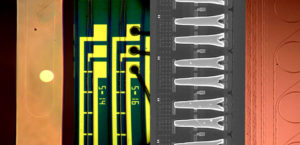Read MCU PIC18F252 Program
Read MCU PIC18F252 Program of flash memory and data of eeprom memory, in the common case, the status of Microcontroller PIC18F252 is locked and after reverse engineering Microcontroller, the microprobe tip will be able to get access to the memory cell and extract the content from the databus where the datastream run through;

Read MCU PIC18F252 Program of flash memory and data of eeprom memory, in the common case, the status of Microcontroller PIC18F252 is locked and after reverse engineering Microcontroller, the microprobe tip will be able to get access to the memory cell and extract the content from the databus
CMOS Technology:
· Low power, high speed FLASH/EEPROM technology
· Fully static design
· Wide operating voltage range (2.0V to 5.5V)
· Industrial and Extended temperature ranges
· Low power consumption:
– < 1.6 mA typical @ 5V, 4 MHz
– 25 ìA typical @ 3V, 32 kHz
– < 0.2 ìA typical standby current
For timing-insensitive applications, the “RC” and “RCIO” device options offer additional cost savings.
The RC oscillator frequency is a function of the supply voltage, the resistor (REXT) and capacitor (CEXT) values and the operating temperature. In addition to this, the oscillator frequency will vary from unit to unit due to normal process parameter variation before crack ic MCU.
Furthermore, the difference in lead frame capacitance between package types will also affect the oscillation frequency, especially for low CEXT values. The user also needs to take into account variation due to tolerance of external R and C components used. Figure 2-3 shows how the R/C combination is connected.
In the RC Oscillator mode, the oscillator frequency divided by 4 is available on the OSC2 pin. This signal may be used for test purposes or to synchronize other logic.
The RCIO Oscillator mode functions like the RC mode, except that the OSC2 pin becomes an additional general purpose I/O pin. The I/O pin becomes bit 6 of PORTA (RA6) when microcontroller ic unlock.
The EC and ECIO Oscillator modes require an external clock source to be connected to the OSC1 pin. The feedback device between OSC1 and OSC2 is turned off in these modes to save current. There is no oscillator start-up time required after a Power-on Reset or after a recovery from SLEEP mode.
In the EC Oscillator mode, the oscillator frequency divided by 4 is available on the OSC2 pin. This signal may be used for test purposes or to synchronize other logic. Figure 2-4 shows the pin connections for the EC Oscillator mode.
Tags: read mcu binary archive,read mcu binary code,read mcu binary content,read mcu binary data,read mcu binary eeprom,read mcu binary file,read mcu binary firmware,read mcu binary information,read mcu binary memory,read mcu binary program

